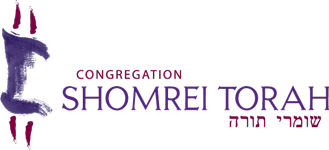Sukkot Morning Service: October 1, 10:30 AM -
led by Rabbinic Pastor Judith Goleman at Shomrei Torah
Sukkot Potluck Dinner: October 3, 6:15 PM in the sukkah -
with guest speaker Adam Davidoff discussing the harvest and sustainable agriculture, and a Klezmer-style band.
20s and 30s: Supper and Schmoozing in the Sukkah: Saturday, October 6, 6:30 PM -
Get to know each other and Rabbi Kramer and share a special dinner in the Sukkah. RSVP to Rabbi Kramer at [email protected].
 All About Sukkot
All About Sukkot
Sukkot commemorates the third and final festival in the Jewish exodus from Egypt. The people of Israel excaped from Egypt (Passover), entered into a covenant with God at Mount Sinai (Shavuot) and wandered about the desert, encamped in temporary huts awaiting entrance in Canaan. The sukkah, which literally means covering or shelter, is the focal point of the festival.Sukkot is the plural form of sukkah.
Sukkot lasts one week, beginning on the 15th day of Tishri, 5 days after Yom Kippur. Central to the holiday are the sukkah along with the lulav and etrog, symbols of the holiday.
Sukkah: The sukkah, a temporary building, reminds us of the temporary dwellings the Israelites built as they wandered in the wilderness after their exodus from Egypt. By recalling the temporary shelter in our mythic past, we are reminded of the fragile nature of the material world and the enduring quality of the life of the spirit.
Biblical source: Leviticus 23:40 tells us that we should “take the product of hadar trees, branches of palm trees, boughs of leafy trees, and willows of the brook and rejoice before Adonai your God seven days.”
Four species: The four species are waved in six directions to show that God is everywhere. Their symbolic meanings are based on midrash.
1. Etrog: The etrog or citron is a lemonlike fruit the hadar tree shaped like and symbolic of the heart. Since the etrog has both taste and aroma, it represents people who have knowledge of Torah and perform good deeds.
2. Myrtle leaves, shaped like and symbolic of the eye, have an aroma but no taste, representing people who perform good deeds, but who do not know Torah.
3. Willow is shaped like and symbolic of the mouth. Since the willow has neither taste nor aroma, it represents people who perform no good deeds and who are ignorant of Torah.
4. Palm is shaped like and is symbolic of the spine. Since the date palm has taste but no aroma, it represents people who know Torah but do not practice good deeds.
Harvest foods are featured during. New apples, pumpkins, winter squash are served in many forms. Cookies in the shape of the horn of plenty and cakes made of apples and pumpkin sweeten the end of the meal.
